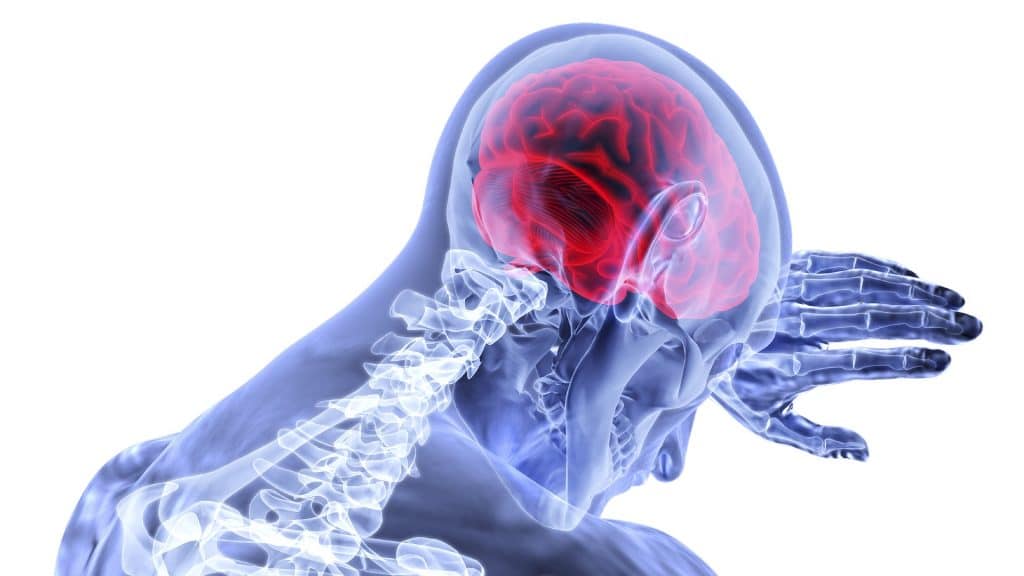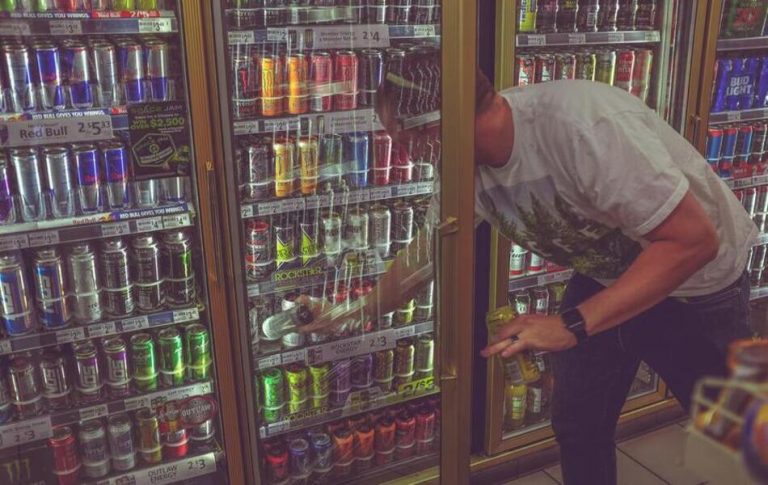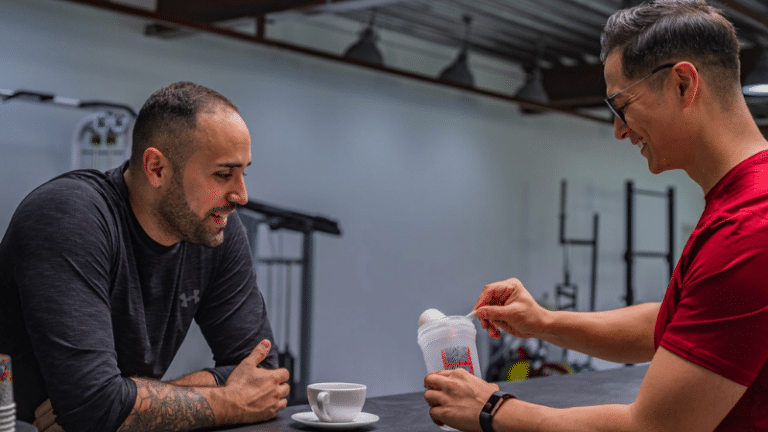How to Recognize the Warning Signs of a Stroke

Understanding and remembering the signs of a stroke may save your own life someday or the lives of your loved ones. But what, in fact, is a stroke? Is it a disease, or an event, or a condition? Is it reversible or not? Is there anything that can be done to prevent or limit any brain damage if the stroke occurs? Keep on reading to find out the answers to all your questions!
The Significance of Recognizing a Stroke in Elderly People
Sadly, each year, around 795,000 people in the US become victims of this illness. Approximately every 40 seconds, someone in the US has a stroke, whereas every four minutes, one person dies from a stroke.
Furthermore, stroke is listed as the fifth leading cause of death in the US after other significant diseases such as cancer, heart and respiratory conditions, and accidents. Even if a person survives a stroke, their quality of life decreases in an overwhelming proportion of cases. However, the adverse effects of a stroke can be diminished if appropriate measures are taken in time.
What Happens if You Have a Stroke?
A stroke happens when the bloodstream to the brain is reduced or cut off. The lack of oxygen and nutrients harms the brain tissue. Usually, only a part of the brain is affected. Brain cells begin to die within minutes, making a stroke a medical emergency.
However, some subtle clinical signs in the patient could direct the stroke recognition and diagnosis to stroke. Quick and responsive actions are critical. The good news is that the prompt handling of a stroke can lessen brain damage and prevent future complications.
What Are the Stroke Symptoms to Look out For?
Several symptoms and signs can direct attention to a possible stroke. If you suppose that you or someone else may be having a stroke, you should pay attention not only to the symptoms themselves but to the number of them. The exact beginning of these stroke signs and symptoms is also important, as well as the length of time they’ve gone on. All the small details about the symptoms can influence the success of treatment.
What are the 5 warning signs of a stroke? The most common ones include:
- Sudden difficulty with verbal communication and understanding—What many consider one of the more unusual stroke symptoms. Patients have trouble speaking, like slurring their words, and they also experience confusion and struggle in understanding speech.
- Unexpected numbness or paralysis of a body part—Sudden development of any numbness, weakness, or paralysis on usually one side of the face or in an arm or leg are common features of stroke in elderly people. A simple test could be helpful. If one arm begins to fall after raising both your arms over your head at the same time, that may be one of the signs of a stroke. Another sign is the dropping off of one side of your mouth when you try to smile.
- Sudden blurred or blackened vision—Trouble with seeing through one or both eyes or double vision are alarming signs of stroke in elderly people.
- Sudden severe headache—A headache accompanied by harsh vomiting, dizziness, or altered consciousness may indicate you’re having a stroke.
- Difficulty walking—Sudden dizziness, stumbling, or loss of balance and coordination could be attributed to the symptoms of a stroke.
Silent strokes only affect a small brain area, but their damage is cumulative. That said, some of the silent stroke symptoms include having trouble remembering things or difficulty concentrating.
If you spot any of the above-listed signs and symptoms, even if they fluctuate or disappear, don’t consider this normal. Remember the acronym “FAST,” (face, arms, speech, and time), and perform the stroke test:
- Face—Does one side of the face or mouth drop if a person smiles?
- Arms—Is one arm unable to rise, or does it drift downward after the person raises both arms?
- Speech—Is their speech slurred or strange when asked to repeat a simple phrase?
- Time—If you detect any of these signs, seek medical attention immediately—i.e., call 911.
Are there warning signs days before a stroke? There actually are early warning signs that can appear for up to seven days before a stroke. So, what happens right before a stroke? Since about 80% of strokes are ischemic, that is caused by clots that block blood flow to the brain, or narrowing of the small or large arteries in the brain, they’re more often than not preceded by a “mini-stroke” or “warning stroke.” The signs of a mini-stroke are temporary. They resemble the common stroke, usually last less than five minutes, and don’t cause brain damage.
However, you shouldn’t wait for these signs of stroke in elderly adults to stop. Oversee the person while waiting for emergency assistance. If you are with someone you believe is showing the warning signs of a stroke, time matters. The longer a stroke stays untreated, the higher the potential is for brain damage and disability.
Moreover, strokes don’t distinguish between people based on age, sex, or race, although more women have strokes than men. In addition, the signs of a stroke in women don’t differ significantly from the signs of a stroke in men.
Causes and Types of Stroke
Different underlying reasons cause interruption of blood flow in the brain. Whether it’s a blocked artery or a blood vessel leaking, the consequences could lead to severe brain damage. In comparison, some people may experience only a temporary interruption of blood flow to the brain without permanent injuries. That’s why it’s essential to learn how to spot a stroke, but also be familiar with the causes and types.
There are three types of stroke, categorized by their cause:
Ischemic Stroke
Ischemic stroke occurs when a brain artery becomes narrow or blocked by a thrombus or embolus (blood clot), leading to a severe shortening of blood flow (a condition called ischemia). Ischemic strokes account for about 87% of all strokes.
Hemorrhagic Stroke
To extend your knowledge and recognize signs of possible stroke on time, you should know that hemorrhagic stroke occurs when a blood vessel in your brain ruptures or leaks. Brain hemorrhages can result from different conditions that affect blood vessels, including uncontrolled high blood pressure, medication with anticoagulants, aneurysms of blood vessels, arteriovenous malformation, etc.
Depending on the location of the vessel rupture, the stroke could be due to an intracerebral or subarachnoid hemorrhage. Unfortunately, after the bleeding, the brain blood vessels may widen or narrow irregularly, limiting blood flow and leading to further brain cell damage.
Transient Ischemic Attack (TIA)
What is a pre-stroke? As we mentioned, a pre-stroke, also known as a TIA stroke or a mini-stroke, is a brief condition with symptoms similar to those of a stroke. A transitory decrease in blood supply to part of your nervous system causes TIA. Fortunately, it only lasts a few minutes. Like an ischemic stroke, a TIA occurs when a clot or debris blocks blood flow to part of the brain.
What are the warning signs of a mini-stroke? Sometimes it’s not possible to distinguish a stroke from a TIA. That’s because the mini-stroke symptoms in the elderly are very similar to those of a stroke. Even though TIA stroke doesn’t usually cause brain damage, there’s still a risk, meaning that TIA can be as deadly as other stroke types. Prompt medical care is critical to avoid any damage to the brain.
Furthermore, according to the alarming statistics from the CDC, TIAs should be treated as a warning event for developing a major stroke within a year. Therefore, the mild stroke symptoms should be treated as an alarming experience with a similar mortality rate to other types of stroke.
Strokes could also be divided anatomically as right-hemisphere and left-hemisphere, cerebellar, and brain stem stroke. Each differs in the clinical presentation and the prognosis of the patient. There are sometimes multiple mini–strokes in elderly people. In addition, mini-stroke recovery takes a few minutes up to a day without medical treatment.
Risk Factors for Stroke in Senior Citizens
You have to be aware of the risk factors that can increase your chances of having a stroke to prevent it.
- Lifestyle risk factors consist of obesity or being overweight, physical inactivity, heavy drinking, the use of illegal drugs (i.e., cocaine and methamphetamines), and cigarette smoking or exposure to cigarette smoke.
- Medical risk factors include having high blood pressure or cardiovascular disease, cholesterol, diabetes, personal or family history of stroke, a previous heart attack or transient ischemic attack, and obstructive sleep apnea.
COVID-19 and Stroke Signs
Even though COVID-19 is considered a lung infection, it also causes blood clots, which may lead to severe stroke. According to experts, this may happen regardless of the person’s age and even in people with few or no symptoms. Symptoms and signs of a pending stroke you should watch out for include:
- facial droop on one body side
- weakness or paralysis of the extremities on one body side
- speech impairment
- lack of sensation in extremities on one body side
Diagnosing Symptoms of Stroke in the Elderly and Stroke Treatment
The priority of the emergency team is to stabilize your symptoms and overall medical condition. Then the doctors will define stroke indications, what the cause is, and which brain region is affected before determining the most appropriate therapy. It’s necessary to rule out other possible causes, such as a brain tumor or a drug reaction.
If your doctor suspects strokelike symptoms, the following tests should be performed:
- detailed anamnesis
- physical examination, together with blood pressure measurements
- blood tests
- computerized tomography (CT) scan
- magnetic resonance imaging (MRI)
- carotid ultrasound
- cerebral angiogram
- echocardiogram
The proper treatment can vary greatly depending on the different types of strokes in elderly patients. Some of the available medications should be used with caution.
Emergency treatment for an ischemic stroke consists of quickly restoring blood flow to the brain, which can be achieved by an intravenous injection of a tissue plasminogen activator (tPA) or emergency endovascular procedures directly inside the blocked blood vessel. In case of signs of a TIA mini-stroke or an ischemic stroke, the doctor may recommend such medications as antiplatelet drugs and anticoagulants to prevent having another stroke in the future.
In contrast, a hemorrhagic stroke requires emergency treatment that aims to control bleeding and reduce intracranial pressure while simultaneously maintaining blood volume with transfusions. Surgical procedures might also be needed to minimize future risks.
From all kinds of strokes, recovering from a TIA stroke is the most favorable. After emergency treatment, care is focused on recovering as much function as possible to make an early return to independent living. Most stroke survivors are pressed to attend a rehabilitation program. Maintaining self-esteem and relationships with others and sustaining interest in the world are essential parts of every patient’s recovery.
After-Effects of a Stroke in Elderly People
Other factors linked to a higher risk of stroke include age, race, sex, and hormones. Moreover, complications are seen more often in elderly patients, and their recovery can often be prolonged.
Stroke complications can be temporary or permanent, depending on how long the brain lacks blood flow and which part was affected. They may include:
- paralysis or impaired muscle control, usually on one body side
- speaking, swallowing, or eating problems
- memory loss or difficulties in thinking, making judgments, reasoning, and understanding concepts
- inability to control emotions or developing depression
- pain or bizarre sensations in body parts affected by stroke
- changes in behavior and the ability to care for themselves
A stroke in an 80-year-old adult could be a challenge. Physical therapy may help the patient return to their everyday activities, especially if it’s alongside therapy with a speech-language pathologist. Like any other brain injury, the success of treating stroke complications varies from person to person. However, they may be improved over time.
How to Prevent a Stroke
Preventing a stroke is based on three primary measures that might help prevent another stroke if there’s a history of a previous stroke or TIA.
-
- Know your stroke risk factors.
- Follow your doctor’s recommendations.
- Adopt a healthy lifestyle.
The care received in the hospital and follow-up afterward may be helpful as well. Controlling the stroke causes is the basis for stroke prevention strategies, so it’s best to follow these guidelines:
- Be physically active every day.
- Treat obstructive sleep apnea.
- Keep your blood pressure within the normal ranges.
- Limit your sodium and alcohol intake.
- Quit tobacco use.
- Learn to manage stress so that you can recognize warning signs for stroke.
- Keep diabetes under control.
- Lower the amount of cholesterol and saturated fat in your diet.
- Maintain a healthy weight.
- Make sure you avoid any illegal drugs.
- Eat healthy and balanced food.
Not only will you lower your stroke risk with these steps, but you’ll also decrease your risk for other diseases like diabetes, heart disease, and cancer.
Conclusion
Strokes are the fifth leading cause of death in the US and a significant cause of severe lifelong disabilities. Learning the signs of a stroke is essential to minimizing the consequences of this potentially life-threatening event. That way, you can detect the stroke before it happens.
Therefore, you want to be capable of detecting the early signs of stroke so that you can get medical help as soon as possible. Every second matters because each moment without oxygen can bring further damage to your brain, your most precious organ.
FAQs
What are the early warning signs of a stroke?
A stroke can happen gradually, even if the patient has one or more sudden symptoms. The following are some early warning signs of a stroke before it happens:
- numbness, weakness, or paralysis in one arm or leg or on one side of the face
- confusion or difficulties understanding other people
- problems talking
- other pre–stroke symptoms are headaches, which are usually very severe
- impaired vision (one or both eyes)
- trouble walking or staying balanced and coordinated
- dizziness is one of the early signs of a stroke in a man or a woman
Exhibiting any combination of these symptoms is enough justification for calling an ambulance.
What are the first signs of a mini-stroke?
The most common signs of this type of stroke include, but are not limited to:
- dysphasia and dysarthria—a language disorder or physical difficulty speaking, respectively
- mini–stroke symptoms also include vision problems
- a strange sense of taste and smell
- confusion and altered consciousness
- dizziness and balance issues
- stroke signs in the face or body show on one side include tingling/numbness and weakness
- severe headache
- finally, passing out may also occur
What causes a stroke in the elderly?
With increasing age, the possibility of suffering a stroke increases. In the elderly population, the most common is embolic stroke, primarily due to atrial fibrillation, which occurs more frequently with increasing age. Amyloid angiopathy, however, is the leading cause of a spontaneous intracerebral hemorrhage. Still, it is not fully clear how the older brain handles ischemic stress. Therefore, strokes in the elderly represent unique problems that deserve individual solutions.
How long are you in the hospital after a stroke?
After a stroke, the hospital stay can vary from a few days to some months, depending on the stroke’s severity. Patients are usually discharged home after getting around safely, either in a wheelchair or by walking, and can get in and out of bed alone.
Besides, the support available at home is also essential. Some people are provided with a care package at home. A small portion of patients discharge themselves earlier, but they usually encounter problems accessing rehabilitation services as a consequence.
Can a stroke kill you instantly?
Not all strokes are fatal. Mild and medium strokes aren’t usually deadly in the short term. In other words, you are not likely to die in the first weeks or months after a mild stroke. However, you might get a complication like a pulmonary embolism, which can kill you, or a swallowing problem that could make you choke to death. This is also valid for mini-strokes in elderly adults.
In contrast, severe/massive strokes are often fatal in the first few days or weeks due to brain swelling, leading to a coma or the need for breathing machines. Sometimes increased intracranial pressure requires brain surgery to relieve the pressure.
Can an elderly person recover from a stroke?
As it relates to stroke recovery rates, the National Stroke Association says that 85% of stroke victims survive, and among those, 75% continue to experience adverse effects from the stroke, ranging from minor impairment to severe complications.
Many factors determine the possibility of a total return to normalcy after a stroke in an elderly patient. Be that as it may, most of them recover 6–12 months with intensive rehab. But they can continue improving mental, emotional, and physical function in the following years. Stroke rehab includes speech, occupational, and physical therapy.
What time of day do most strokes occur?
Most strokes happen between 6 a.m. and noon, with a 79% increased relative risk compared with the normalized rate for the other 18 hours of the day. On the other hand, the period with the lowest risk for strokes is between midnight and 6 a.m., with a 35% lower relative risk than expected if compared with the remaining 18 hours of the day.
How can I tell if I am having a stroke?
A stroke can happen to a given person at any time. However, the game-changer lies in planning for the emergency. Therefore, be prepared! If you have any medical conditions, wear some identification, such as a medical bracelet that describes your medical status, allergies, and any medications you take.
If you learn the warning signs of a stroke, and if your family and friends do the same, chances of a good outcome after a stroke significantly improve. Teaching your children the FAST stroke assessment (face, arms, speech, time) test, plus the importance of calling 911 immediately, or using a medical alert system, gives you a chance to survive after a stroke and to minimize the risk of complications developing.






